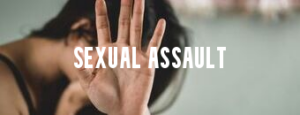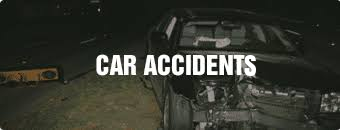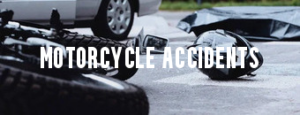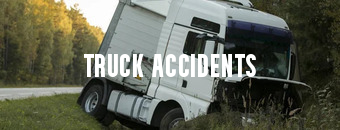- Our Firm
- Personal Injury
-
-
-
Personal Injury Lawyers
-
-
-
-
-
-
Injured in an accident? At Diamond & Diamond, our team of lawyers rely on their reputation in the field and extensive experience in personal injury to provide clients with a dedicated support system over the duration of their case.
-
-
-
-
-
HAVE YOU RECENTLY BEEN INJURED IN AN ACCIDENT?
-
-
-
- Corporate
- Class Action
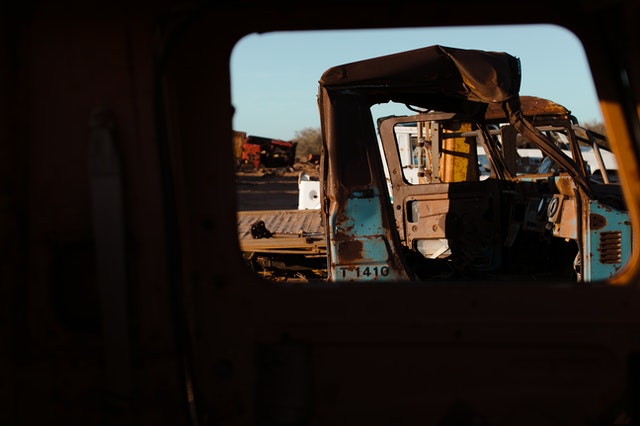
Fault in a T-Bone Collision
#AskZevBergman
Motor vehicle accidents are sudden, violent events happening, in many instances, without warning. It’s common for the drivers involved in an accident to be unsure about what just happened. Police and investigators interview witnesses and sift through the wrecked vehicles and other evidence to piece together the facts to determine how the collision happened and who was at fault. One of the more difficult types of accidents to determine fault is a T-bone collision in which the front of one vehicle smashes into the side of another.
Deciding fault in Ontario
When you have an accident in Ontario, claims for property damage and personal injuries are handled through your own insurance company without regard to who was at fault in causing the accident. However, insurance companies always determine the percentage of fault on the part of each driver because drivers who are more than 25 percent responsible for causing an accident will see an increase in their auto insurance premiums. An owner who lends an auto to a friend who then has a collision with it is penalized for the accident with increased insurance premiums if the friend is found to be at fault.
Insurance companies use the Fault Determination Rules created under the Insurance Act of Ontario when deciding the degree of fault of each driver. The rules are actually a set of 40 scenarios with diagrams of some of the most common types of accidents, including T-bone collisions, with an explanation for assessing fault in each situation. The Fault Determination Rules are only used for claims involving property damage. They are not used to decide liability in personal injury claims in which a court action is brought on behalf of an injured driver or passenger.
Fault and T-bone collisions
There are two general scenarios under which T-bone collisions happen:
- A vehicle going straight hits a vehicle making a left turn.
- A vehicle lawfully in an intersection is struck by or strikes a vehicle ignoring a traffic signal or traffic control device, such as a stop sign.
Under the Fault Determination Rules, a vehicle making a left turn must yield the right of way to approach traffic. If the turning vehicle is hit by an approaching vehicle, the driver of the turning vehicle would be at fault using the rules. However, in a personal injury claim, evidence introduced at trial proving the approaching vehicle driven by the injured party had sufficient time to take evasive action to avoid a collision could cause part of the fault in causing the collision to be placed on the victim.
The importance of witnesses
Witnesses can play a pivotal role in proving fault in T-bone collisions brought to court to recover compensation. Assuming that each of the parties to a personal injury lawsuit offer conflicting accounts of what happened, an eyewitness without ties to either party could offer the only reliable account of how an accident happened. In a T-bone collision, a witness who saw the accident could confirm or refute who had the right of way or which driver failed to obey a traffic signal.
Experienced personal injury lawyers
Conducting a proper investigation and knowing how to present evidence to prove fault in a T-bone collision is why people trust the experienced personal injury lawyers at Diamond & Diamondto represent them.Years of experience pursuing compensation claims on behalf of victims injured through the negligence of others makethem the personal injury lawyers trusted by people throughout Ontario. Don’t delay, contact our 24/7 injury hotline at 1-800-567-HURT or visit our website to speak to someone now about your claim. Consultations are free, and we have offices located throughout Ontario.
Need a Lawyer?
We are here 24/7 to address your case. You can speak with a lawyer to request a consultation.
1-800-567-HURTGet started with a free consultation
OUR TEAM
- Yefim Belyavsky
- Osama Hashmi
- Nicole Sherman
- Quan Duong
- Sheffali Chaudhary
- Francesco Rotatore
- Samarth Bajaj
- Qasim Latif
- Jeffrey Stephan
- Cassandra Harvey
- Ishmeet Sandhu
- Nolan Bachmann
- Annamarie Demaj
- Jeffrey Hum
- Tofunmi Adeyeye
- Alessia De Gasperis
- Amandeep Chawla
- Jeremy Tsoi
- Kimiya Razin
- Shir Zisckind
- Gray Sinden
- Shelly Bard
- Christian Brown
- Daly Canie
- Tanveer Sohal
- Prianka Virdi
- Noah Brownstone
- Justin Kaminker
- Harinder S. Bhatti
- Craig Yargeau
- Kiran Birk
- Amit Singh
- Andrei Teju
- Maria Zahid
- Jacob Elyk
- Harry Gill
- Kristina Olivo
- Egi Bano
- Cam Woolley
- Charles Thompson
- Alexandra McCallum
- John Sime
- Allan Cocunato
- Patrick Poupore
- Erika Henderson
- Marina Korshunova
- Brandon Handelman
- Regeena Alapat
- Ryna Kim
- Isaac Zisckind
- Manpreet Bhogal
- Mathura Santhirasegaram
- Nikolai Singh
- Sandra Zisckind
- Jeremy Diamond
- Michael Blois
- Darryl Singer
- Nadia Condotta
- Tinashe Madzingo
- Veronica D’Angelo
- Corey J. Sax
- Scott Tottle
- Steven Wilder
- TJ Gogna
- Jillian Carrington
- Joshua Himel
- Simon Diamond
- Cory Rubin
- Simon Mariani
- Brandon Greenwood
- Basil Bansal
- Nastassia Ivanova
- Tania Fleming
- George Laloshi
- Patrycja Majchrowicz
- Diana Iakossavas
- Dior Africa
- Alex Ragozzino
- Liana Saccucci
- Richard J. Chang
Head Offices
Main Offices
Barrie
Main Office
168 Bayfield Street
Calgary
Main Office
1331 Macleod Trail SE, Suite 645
Edmonton
Head Office
4246 97 Street NW, Unit 103
Halifax
Consultation Office
1701 Hollis St
London
Main Office
256 Pall Mall St, Suite 102
Oshawa
Consultation Office
50 Richmond Street E, Unit # 108 B
Ottawa
Main Office
955 Green Valley Crescent, Unit 315
Sudbury
Main Office
31 Larch Street, Unit 300
Timmins
Main Office
120 Cedar Street South, Unit 002A
Toronto
Head Office
255 Consumers Road, 5th Floor
Vancouver
Head Office
1727 West Broadway, Suite 400
Windsor
Main Office
13158 Tecumseh Rd. E. Unit 3B
Additional Areas Served
Ontario
- Ajax
- Alberta
- Aurora
- Barrie
- Belleville
- Bowmanville
- Brampton
- Brantford
- Brockville
- Bracebridge
- Bradford
- Burlington
- Burnaby
- Calgary
- Chatham
- Cobourg
- Collingwood
- Cornwall
- Durham
- Edmonton
- Elliot Lake
- Etobicoke
- Georgetown
- Guelph
- Hamilton
- Huntsville
- Kanata
- Kelowna
- Kingston
- Kitchener
- Leamington
- London
- Markham
- Milton
- Mississauga
- Muskoka
- Niagara Falls
- Newcastle
- Newmarket
- North Bay
- North York
- Oakville
- Orangeville
- Orillia
- Oshawa
- Ottawa
- Owen Sound
- Parry Sound
- Perth
- Peterborough
- Pickering
- Prince Edward County
- Richmond
- Richmond Hill
- Sault Ste Marie
- Sarnia
- Scarborough
- St. Catharines
- St. Thomas
- Stouffville
- Sudbury
- Surrey
- Thunder Bay
- Timmins
- Toronto
- Uxbridge
- Vancouver
- Wallaceburg
- Waterloo
- Welland
- Whitby
- Windsor
- Woodstock



